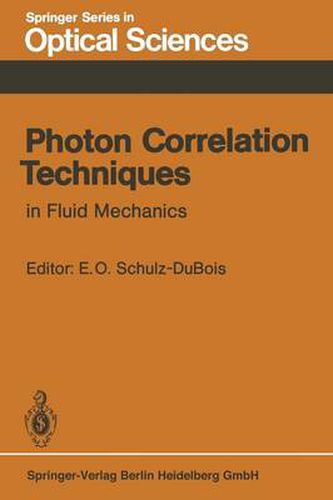Readings Newsletter
Become a Readings Member to make your shopping experience even easier.
Sign in or sign up for free!
You’re not far away from qualifying for FREE standard shipping within Australia
You’ve qualified for FREE standard shipping within Australia
The cart is loading…






This title is printed to order. This book may have been self-published. If so, we cannot guarantee the quality of the content. In the main most books will have gone through the editing process however some may not. We therefore suggest that you be aware of this before ordering this book. If in doubt check either the author or publisher’s details as we are unable to accept any returns unless they are faulty. Please contact us if you have any questions.
Photon correlation is a kind of spectroscopy designed to identify optical frequency shifts and line-broadening effects in the range of many MHz down to a few Hz. The optical intensity is measured in terms of single photon detection events which result in current pulses at the output of photomulti plier tubes. This signal is processed in real time in a special-purpose paral lel processor known as a correlator. The resulting photon correlation func tion, a function in the time domain, contains the desired spectral informa tion, which may be extracted by a suitable algorithm. Due to the non-intrusive nature and the sound theoretical basis of photon correlation, the phenomena under study are not disturbed, and the parameters in question can be precisely evaluated. For these reasons photon correlation has become a valuable and in many instances indispensable technique in two distinct fields. One of these is velocimetry in fluid flow. This includes hydro- and aerodynamic processes in liquids, gases, or flames where the velo city field may be stationary, time periodic, or turbulent, and may range from micrometers per second for motion inside biological cells to one kilometer per second for supersonic flow. The other major field is stochastic particle propagation due to Brownian motion.
$9.00 standard shipping within Australia
FREE standard shipping within Australia for orders over $100.00
Express & International shipping calculated at checkout
This title is printed to order. This book may have been self-published. If so, we cannot guarantee the quality of the content. In the main most books will have gone through the editing process however some may not. We therefore suggest that you be aware of this before ordering this book. If in doubt check either the author or publisher’s details as we are unable to accept any returns unless they are faulty. Please contact us if you have any questions.
Photon correlation is a kind of spectroscopy designed to identify optical frequency shifts and line-broadening effects in the range of many MHz down to a few Hz. The optical intensity is measured in terms of single photon detection events which result in current pulses at the output of photomulti plier tubes. This signal is processed in real time in a special-purpose paral lel processor known as a correlator. The resulting photon correlation func tion, a function in the time domain, contains the desired spectral informa tion, which may be extracted by a suitable algorithm. Due to the non-intrusive nature and the sound theoretical basis of photon correlation, the phenomena under study are not disturbed, and the parameters in question can be precisely evaluated. For these reasons photon correlation has become a valuable and in many instances indispensable technique in two distinct fields. One of these is velocimetry in fluid flow. This includes hydro- and aerodynamic processes in liquids, gases, or flames where the velo city field may be stationary, time periodic, or turbulent, and may range from micrometers per second for motion inside biological cells to one kilometer per second for supersonic flow. The other major field is stochastic particle propagation due to Brownian motion.